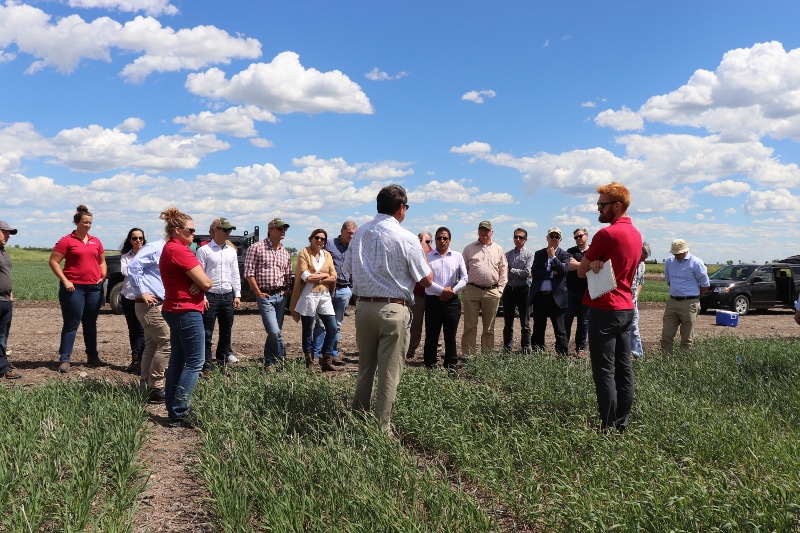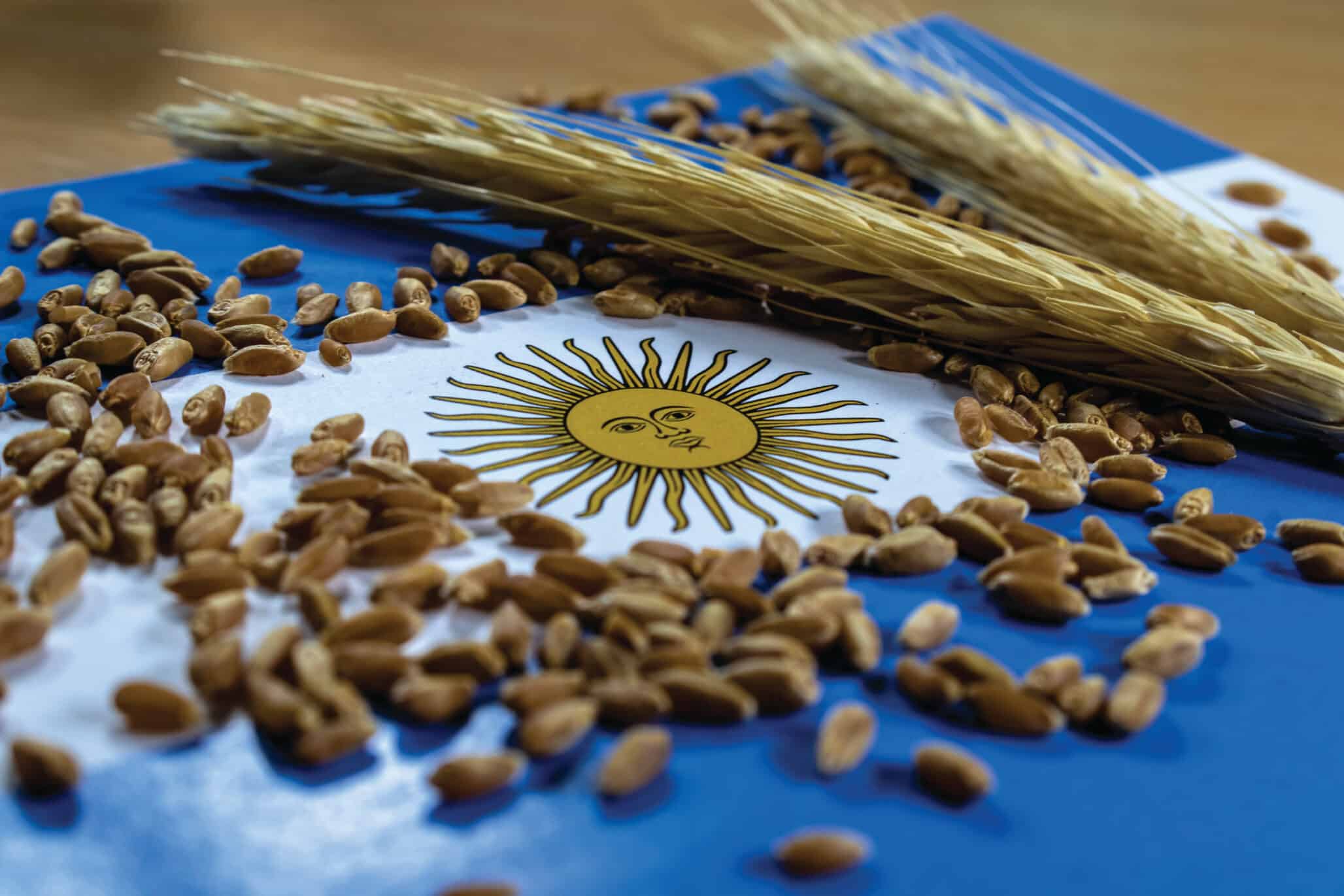Latin America faces an ongoing struggle over plant breeders’ rights. Canada’s Partners in Innovation approach offers one way forward.
Editor’s note: We intend this story to be the first in a series showcasing Canada’s leadership on the world seed stage and its role in helping shape global policy in an effort to better feed the world.
On a warm Canadian day last summer, seven people from Argentina, Brazil, Uruguay and Mexico arrived in Saskatoon, Sask., to participate in a high-level study tour on plant variety protection for promoting investment in plant breeding.
Organized by SeCan and the Plant Breeders’ Rights (PBR) office of the Canadian Food Inspection Agency (CFIA), the tour was sponsored by a long list of seed industry players in Canada: SeCan, Corteva Agriscience, Limagrain, Nutrien, the Canadian Seed Trade Association (CSTA), the Canadian Seed Growers Association (CSGA), the Canadian Plant Technology Agency (CPTA) and the University of Saskatchewan’s Crop Development Centre (CDC).
But it was a truly global effort: the tour was funded by the World Intellectual Property Organization, (WIPO), the International Union for the Protection of New Varieties of Plants (UPOV), the United States Patent and Trademark Office (USPTO), and the Ministry of Agriculture, Nature, and Food Quality of the Netherlands.
The tour was an opportunity to showcase the way the Canadian industry came together in 2015 to adopt the 1991 Act of the International Union for the Protection of New Varieties of Plants (UPOV 91), 24 years after becoming a UPOV member.
“Canada is not so different from us in the sense of what the landscape looks like regarding plant breeding, production and commercialization,” says Diego Risso, executive director of the Seed Association of the Americas (SAA). “Every stakeholder has its interests and the role of the government is to provide a good and fair regulatory framework and enforcement in order to meet everyone’s interests and business.”
Most Latin American countries are signatories to UPOV ’78, which provides fewer protections for plant breeders’ intellectual properties and fewer opportunities to collect royalties on new innovations, presenting a threat to plant breeding.
According to Risso, some Latin American countries such as Uruguay — the first country in Latin America to ratify UPOV — have incorporated articles or provisions of UPOV ’91. However, to fully update seed law to UPOV ’91 requires what he calls a “good atmosphere to reach a political will.”
“Canada provides some great insights on how a process of this kind should take place, to reach a good ending, balancing all parties’ interests,” he says.
Canada’s path to full ratification is still fresh in the minds of industry players, and this was a key benefit of the tour, says Todd Hyra, western Canadian business manager for SeCan. Canada recently ratified UPOV ’91, so other countries are looking to our system, he says.
According to Anthony Parker, commissioner of the PBR Office, fully ratifying UPOV ’91 was a long and difficult process, but Canada’s experience wasn’t unique. “The Latin American countries Argentina, Brazil, Chile and Mexico signed on to UPOV ’78 much like Canada did but are seeing struggles advancing changes to the law,” he says.

Broad Perspective
Given the complexity of the fabric of the seed industry in Canada, it was important to tour organizers to highlight the wide range of industry players who have been impacted by updated PBR.
Tour participants visited DuPont Pioneer in the U.S. before arriving in Saskatchewan. There, they heard from the CSTA, CSGA, CPTA and the SAA before visiting Limagrain’s research centre in Saskatoon.
Parker says Canada’s ratification of UPOV ’91 has attracted an unprecedented level of foreign investment in the country, led by French cooperative Limagrain, which has formed Limagrain Cereals Research Canada as a joint venture with Canterra Seeds.
“Limagrain hasn’t been shy about saying they wouldn’t have a footprint in Canada for breeding and research if it hadn’t been for UPOV ’91. The whole idea is that strengthening IP law increases opportunities for international companies to invest,” he says.
Hyra echoes this sentiment. “The moment Canada signed onto UPOV ’91, there was a flurry of activity from companies around the world interested in breeding in Canada. It’s a long-term play for them. They have to get the products through the registration system and have the performance to encourage uptake by growers. It’s a long-term investment.”
But public and independent entities also benefit from improved IP protection over the long-term, Parker emphasizes. The tour stopped at the CDC to hear from researchers on how royalties on sales of certified seed can help support public breeding programs, and then at independent seed retailer Terry Ardell’s farm near Vanscoy, Sask. They also visited oat breeder Jim Dyck’s operation, which is “very dependent on IP protection,” says Parker.
“Quite often, the perception is that IP can only benefit large corporations. But here we’re seeing small breeders benefiting from IP protection,” he says.

Stakeholder Involvement
A key lesson for tour participants was the Partners in Innovation approach Canada took to address stakeholders at every level, according to Lorne Hadley, executive director of the CPTA.
Alignment of stakeholders also meant alignment of positive messaging around PBR. In Latin American countries, as in Canada, there are concerns that farmers will be disadvantaged by legislation protecting breeders.
“We wanted to show that our system was cross-supporting. We’re not out to try to catch people, but to convince people to stay onside with the regulations and paying the breeder. CPTA’s role was to show that one of the ways of gaining acceptance for UPOV ’91 was putting to bed concerns about overzealous enforcement,” says Hadley.
“We included all breeders — public, private, large and small — and respected the interests of producers and showed them we had a system of compliance that is fair.”
Risso says it was useful for tour members who are linked to the parliamentary discussions happening in Argentina, Brazil and Mexico around updating seed laws to hear these success stories from their Canadian counterparts.
But the most significant benefit of the visit, he says, was the opportunity to hear firsthand from those involved in the process — “to listen to each of the parties, identify the pros and cons [of adherence to the system], and to know the methodology of workshops and meetings, back and forth, in which all the actors raised their interests and [worked toward achieving] a common goal,” says Risso.
“The UPOV Office would like to thank the authorities in Canada and the United States of America for enabling the High-Level Study Tour to take place,” adds Leontino Taveira, UPOV’s technical and regional officer for Latin America and the Caribbean, who was also a participant on the tour.
“We would also like to thank the individual organizations in both countries that demonstrated the importance of the 1991 Act of the UPOV Convention for promoting investments in plant breeding by small, medium and large-sized enterprises from the public and private sector.”












